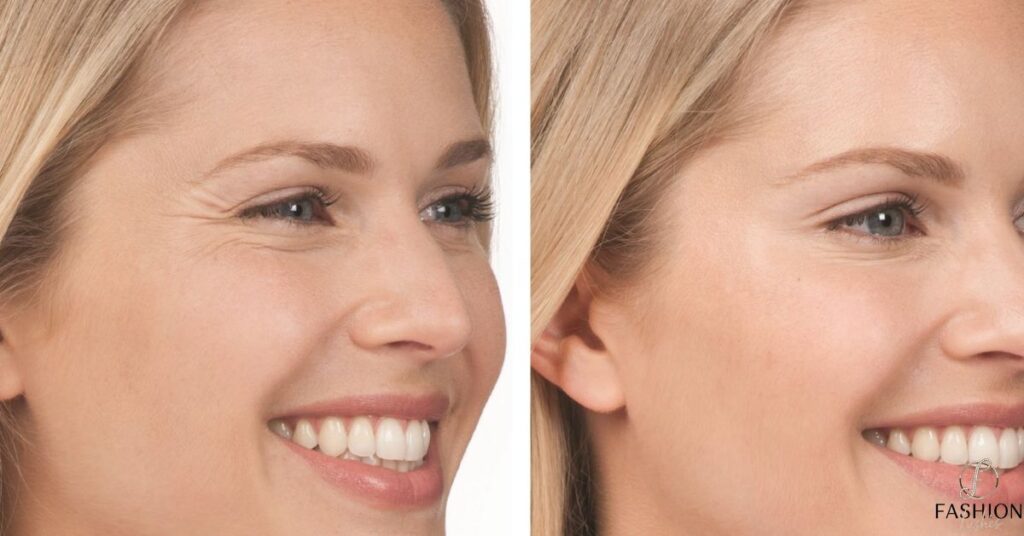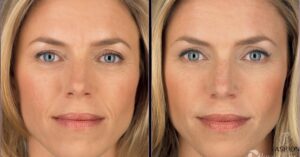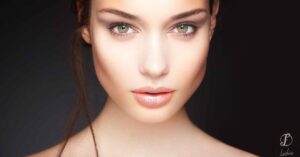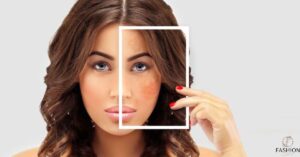Fine lines, around the eyes known as crows feet are an indicator of aging that many individuals aim to reduce. Botox injections are a liked method, for addressing this issue.
Botox is a type of neurotoxin that can temporarily ease tension, in muscles. By applying it near the eyes it has the ability to reduce the appearance of crows feet and wrinkles. Numerous individuals believe in the effectiveness of Botox to help them attain an youthful appearance.
Is it truly effective, in treating crows feet? How well does it. How long do the effects last? Lets delve deeper into what outcomes you can anticipate from this treatment.
How does Botox work?
Botox injections utilize a neurotoxin known as toxin to block nerve signals to muscles preventing muscle contraction. This leads to relaxation and smoothing of wrinkles caused by muscle movement.
To reduce the appearance of crows feet Botox is administered into the muscles, near the eyes. This procedure is swiftly performed at the physicians clinic. Anesthesia is not needed,. The injection area is numbed beforehand.
What to expect when you have it done
Your healthcare provider will use a needle to administer Botox into the targeted areas. You might experience a pinching feeling at the injection spots. The process is generally tolerable, for the majority of individuals.

Afterwards you can resume your routine. Your healthcare provider might provide treatment guidelines such, as refraining from touching the treated areas.
Is it effective?
Botox works well in temporarily reducing or getting rid of crows feet and other facial wrinkles. You may begin to see results, within 1 2 days with the full impact kicking in, within 1 2 weeks. The effects usually stay for 3 4 months before the wrinkles make a comeback.
For best results, Botox needs to be repeated periodically. Consistent treatments can help train facial muscles over time. Many patients are pleased with Botox for minimizing crow’s feet.
What you will pay
The price of Botox can differ depending on the charges of the provider and the quantity of product administered. Typically each session could amount, to hundred dollars or more that you need to pay yourself. It’s uncommon for health insurance to include Botox treatments for reasons.
Costs can really add up over time with the need for re-treatment every few months. But many feel the results are worth the investment to look more youthful.
Recovery timeline
After getting Botox injections, for crows feet there is hardly any downtime required. Any redness or swelling typically goes away within a day or two. Its recommended to steer of exercise for the first 24 hours following the treatment.

It takes around a week for the full muscle-relaxing effects to be apparent. Results then last 3-4 months before wrinkles start to gradually reappear as the Botox wears off.
Potential side effects to watch for
The most common Botox side effects are bruising, headache, and eye dryness or excessive tearing. These are usually temporary and mild if treated correctly.
In rare cases, Botox can cause an allergic reaction or more serious side effects if it spreads beyond the injection area. Be sure to select an experienced injector to minimize risks.
Other options for crow’s feet
There are options besides Botox, for addressing crows feet, such as using dermal fillers undergoing chemical peels opting for laser resurfacing or considering plastic surgery procedures, like brow lifts or facelifts.
Options that are not intrusive such, as using creams and serums on the skin can also be effective, in reducing the appearance of wrinkles. Choosing the course of action will vary based on what you aim to achieve how much you are willing to spend. How quickly you want to recover.
Read This Blog: What Causes Hyperpigmentation on Lips And How to Fix It
The bottom line
Botox works well in reducing the visibility of crows feet, in the future. When administered correctly it can give you a appearance without the need, for surgery.
The outcomes may not last forever requiring follow up injections, for upkeep. However for individuals the benefits of adding Botox to their beauty routine outweigh the need, for maintenance.
Aesthetic treatment of facial lines
As people age it’s common to notice facial lines and wrinkles appearing. To address these signs of aging many individuals opt for procedures to reduce their visibility. One chosen method involves the use of muscle relaxing injections such, as Botox.
Injecting substances can temporarily ease the muscles, for wrinkles resulting from squinting, frowning and various facial expressions. This process can help reduce the appearance of crows feet, forehead lines and wrinkles, around the mouth and chin.
Evolution of the indications

Botox was initially approved for treating muscle spasms and crossed eyes. Doctors later discovered it could reduce wrinkles by relaxing underlying facial muscles.
Over the years Botox has become increasingly popular, for its applications. Nowadays it is widely utilized as a beauty procedure to address the lines and wrinkles that result from expressions.
Efficacy and safety highlights
Many research studies have shown that Botox is quite effective, in reducing lines and wrinkles. When administered correctly it can visibly improve the appearance, by smoothing out the skin.
Botox has a established history of safety when given by medical practitioners. Any potential side effects are typically mild and temporary if they do occur.
Emerging treatment patterns and lessons learned
As Botox has grown in popularity, specialists have fine-tuned injection sites and dosing. Strategically targeting specific muscles can achieve very natural-looking results.

Experienced injectors follow best practices to maximize efficacy while limiting potential side effects. They continually learn optimal techniques through research and hands-on experience.
Impact of indication
The popularity of using Botox for enhancing appearance has significantly increased in the few years. It provides a invasive method to reverse the signs of aging that are visible, on the face.
This simple, fast and reasonably priced solution is becoming increasingly popular. It helps individuals enhance their appearance and confidence as they age gracefully.
Also Read This Blog: Here’s Exactly How To Determine Your Face Shape
What are crow’s feet?
Over the years crows feet are the lines or wrinkles that form at the edges of the eyes, due, to squinting, smiling and various facial movements.
As people grow older they often seek ways to reduce the visibility of crows feet in order to attain a polished appearance, near the eyes.
Do crow’s feet affect both men and women equally?
As people age both men and women may experience the appearance of crows feet, which are influenced by factors.
Excessive sunlight exposure greatly contributes to the development of crows feet and wrinkles. Additionally factors such, as skin type, genetic predisposition and individual lifestyle choices also influence how pronounced these signs of aging may appear.
How do crow’s feet affect my body?
As you age crows feet, which are the lines that form at the edges of your eyes become more noticeable. Fortunately they are purely cosmetic. Do not result in any discomfort or damage.
Many individuals perceive crows feet as aging. These fine lines may give the impression of being older fatigued or, under pressure which can affect ones self assurance.
Symptoms and Causes
The primary indication of crows feet is the appearance of lines. Creases that extend outwards from the outer eye region. These wrinkles tend to become more prominent when making expressions such, as squinting or smiling.

Lines, around the eyes known as crows feet develop due to the muscle movements made over time while expressing emotions. Additionally factors like prolonged exposure to sunlight can play a role, in their formation.
When do crow’s feet start to appear?
Lines, around the eyes known as crows feet may begin to appear in your 20s or 30s varying from person to person. These wrinkles are often one of the signs of aging that people experience.
However, most don’t develop significantly prominent crow’s feet until later in adulthood, usually age 40 or beyond. The wrinkles become deeper over time.
What causes crow’s feet?
Crows feet mostly result from the aging process and the frequent facial expressions made around the eyes over a period. Additional factors that play a role include;
- Sun exposure and free radical damage
- Smoking
- Genetics and natural aging of the skin
- Loss of collagen and skin elasticity
Management and Treatment
There are approaches, to dealing with or addressing existing lines around the eyes known as crows feet. These options span from measures, to invasive cosmetic treatments.
Some of the options are sunscreen for skin protection aging creams containing retinol, neuromodulators such, as Botox for injections laser treatments, for skin resurfacing and cosmetic surgical procedures.
How do you prevent crow’s feet?
Although you cannot halt the aging process you can mitigate excessive wrinkles, around the eyes by adopting healthy practices such, as;
- Using sunscreen and sun-protective accessories
- Not squinting or constantly squeezing eyes
- Keeping skin moisturized
- Not smoking
- Eating a healthy, antioxidant-rich diet
Frequently Asked Question
What are crow’s feet?
Lines known as crows feet can develop at the corners of the eyes due, to facial expressions such, as squinting and smiling.
At what age do crow’s feet start?
The fine lines, around the eyes can start showing up in your twenties or thirties. They usually become more noticeable after the age of 40 as the skin loses its elasticity.
Are crow’s feet just from aging?
As people age wrinkles around the eyes naturally appear. However factors such, as exposure, to sunlight smoking and genetic predisposition can accelerate their formation. Make them more pronounced.
Can crow’s feet be prevented?
You cannot entirely stop the formation of crows feet. Applying sunscreen, avoiding squinting refraining from smoking and ensuring your skin stays hydrated can reduce the chances of developing wrinkles.
How do you get rid of crow’s feet?
Options, for treatment encompass aging creams containing retinol, injections such, as Botox or fillers, laser therapies and various cosmetic surgical procedures.
Are crow’s feet treatments permanent?
Non surgical treatments typically provide results. Injections tend to last for 3 6 months whereas procedures such, as laser resurfacing can help reduce the appearance of crows feet for a period of 1 2 years.
How much do crow’s feet treatments cost?
Prices can differ, with Botox treatments ranging from $200 to $600 laser resurfacing costing between $600 and $1200 and invasive procedures like facelifts priced at $5,000 or more.
Conclusion
As individuals age, the presence of crows feet though an occurrence may evoke feelings of insecurity among those desiring a youthful appearance. Fortunately numerous solutions exist to reduce the visibility of these lines and wrinkles.
Simple steps such, as using sunscreen and opting for treatments, like injections or laser procedures can help you discover an option that aligns with your objectives and financial plan. The crucial factor is collaborating with beauty experts to reach your goals in a secure and efficient manner.
Decide whether you want to “embrace the trend” or explore remedies, for crows feet—it’s entirely up, to you. Knowing your choices empowers you to present your self confidently as you gracefully grow older.











